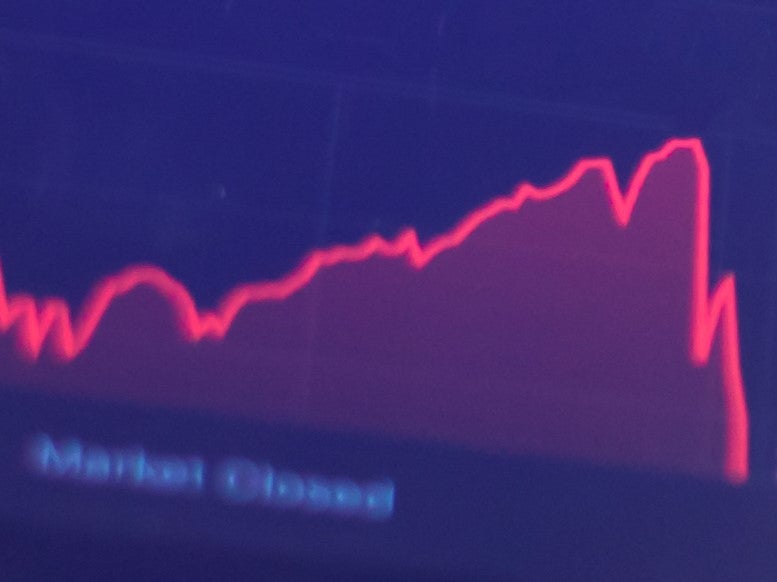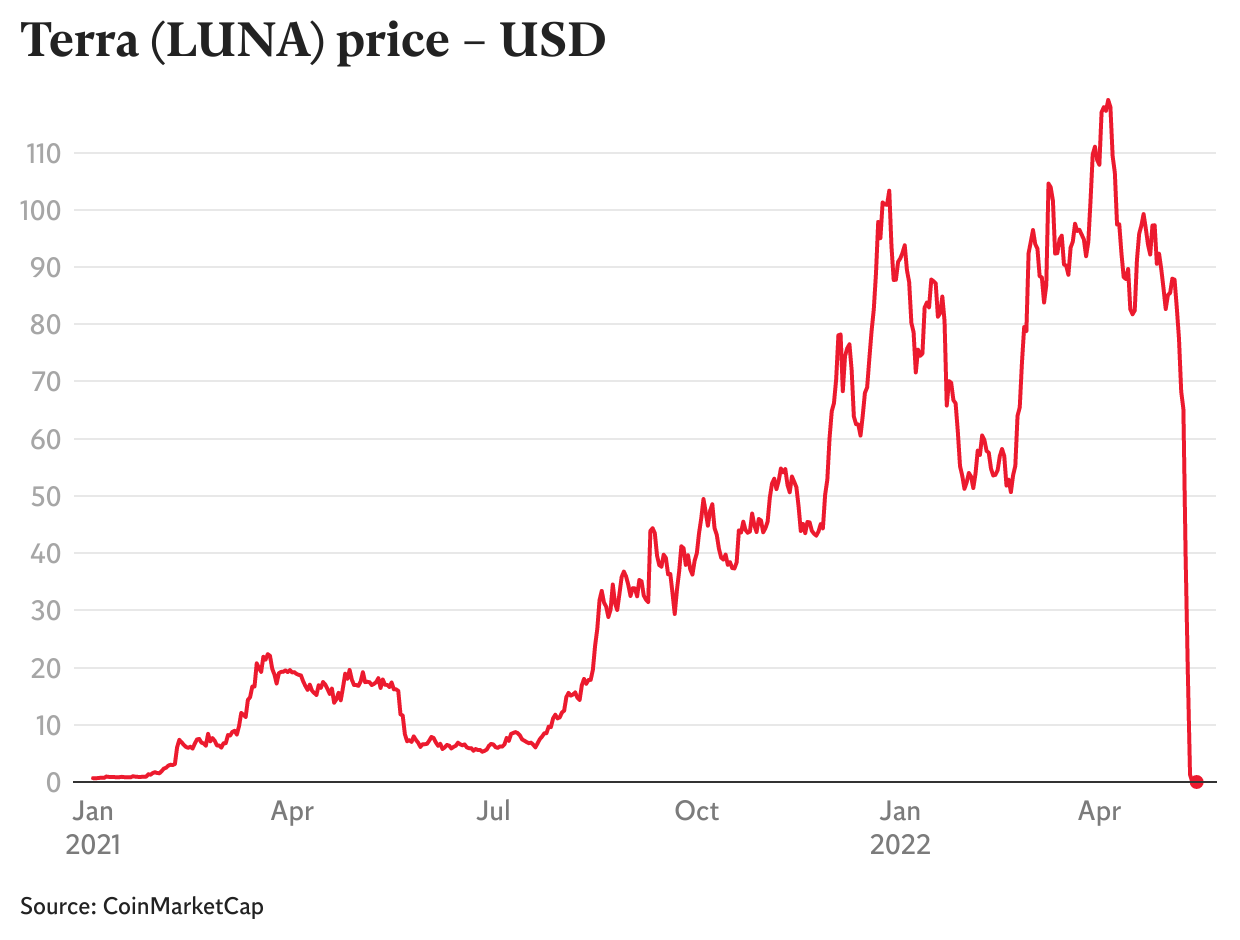Crypto crash: What happened to Terra LUNA and UST and will they ever recover?
Biggest ever crypto collapse attracts conspiracy theories

Your support helps us to tell the story
From reproductive rights to climate change to Big Tech, The Independent is on the ground when the story is developing. Whether it's investigating the financials of Elon Musk's pro-Trump PAC or producing our latest documentary, 'The A Word', which shines a light on the American women fighting for reproductive rights, we know how important it is to parse out the facts from the messaging.
At such a critical moment in US history, we need reporters on the ground. Your donation allows us to keep sending journalists to speak to both sides of the story.
The Independent is trusted by Americans across the entire political spectrum. And unlike many other quality news outlets, we choose not to lock Americans out of our reporting and analysis with paywalls. We believe quality journalism should be available to everyone, paid for by those who can afford it.
Your support makes all the difference.On 9 May, after nearly 18 months of steadily holding its value against the US dollar, the so-called stablecoin TerraUSD (UST) became unpegged.
The uncoupling triggered a response that would ultimately crash not only UST and the Terra (LUNA) cryptocurrency, but also contribute to bitcoin and the broader crypto space seeing a major downturn that it is yet to fully recover from.
So how did it happen and what happens next for investors, the project and the wider crypto space?
Terra LUNA and UST: What happened?
Both UST and LUNA exist on the Terra blockchain and are overseen by the non-profit Luna Foundation Guard (LFG), which stockpiled roughly $3.5 billion in bitcoin and other cryptocurrency in the months leading up to the crisis in order to mitigate against such an outcome.
UST is an algorithmic stablecoin, which means it is not backed up by dollar reserves in order to remain pegged to the fiat currency. Instead, UST uses its partner coin LUNA to maintain its value, with each UST token minted resulting in the equivalent of $1 of LUNA being removed from circulation, and vice versa.
In an effort to bring UST back to parity with the US dollar when its price began to drop, LFG used its vast reserves to buy up huge amounts of UST in an effort to force up the price. In doing so, vast amounts of LUNA flooded the market, resulting in a near-total price capitulation.

What actually caused UST to lose its peg in the first place has become the subject of much speculation, with one popular conspiracy theory suggesting that someone deliberately dumped $350 million worth of UST. By doing so, LFG would be forced to offload its bitcoin, thus causing its price to drop. Anyone who succeeded in doing this could potentially profit by holding short positions on BTC.
“So how much did our attacker make?” speculated crypto and blockchain commentator Onchain Wizard. “There aren’t many details on where they covered obviously, but if they are able to cover (or buy back) the entire position at ~$32k, that means they made $952m on the short.”
Terra LUNA and UST: What happens next?
UST’s demise saw it fall below $0.10, though it is functionally worthless. The collapse saw LUNA drop more than 99 per cent from its peak above $110 to just one ten thousandth of one cent. In total, close to $60 billion was wiped from their combined market caps.
Meanwhile bitcoin and Ethereum (ETH) continue to trade close to 18-month lows, with confidence in the market severely shaken. One measure of market sentiment, the Crypto Fear & Greed Index, is at its lowest level since March 2020, when pandemic-induced panic caused a sell-off that pushed the price of bitcoin below $5,000.
There are plans to try to revive LUNA, with Terraform Labs founder and CEO Do Kwon laying out what he believes the “best steps” are going forward. The revival plan involves something known as a hard fork, though it will require consensus from the Terra community in order to work.
“What we should look to preserve now is the community and developers that make Terra’s blockspace valuable – I’m sure our community will form consensus around the best path forward for itself, and find a way to rise again,” Mr Kwon tweeted.
High-profile figures within the crypto industry, including Binance CEO Changpeng Zhao, have questioned whether the rescue plan would even work, while another mini price crash following its unveiling suggests confidence is not high.
The future of LUNA and UST remains uncertain. But it is not the first, nor even the worst, crypto market crash. Every single time before, it has recovered to new record highs, and many analysts and commentators believe this time will be no different.
“The UST and LUNA situation, along with the big recent BTC dips, are a clear example of how anything can go wrong in the volatile world of cryptocurrency,” Michael Kamerman, CEO of online trading platform Skilling, told The Independent.
“This by no means signifies the end of crypto, especially as we are seeing more and more brands and retailers accept bigger coins such as BTC and Solana (SOL) as payments. However, the crypto world can be unforgiving, as those who invested in LUNA and UST are finding out. Therefore it is absolutely essential for retail traders to ensure they do their due diligence when trading something as volatile as crypto.”
An investigation by blockchain analytics firm Elliptic tracked the $3.5 billion Terra reserve across various crypto exchanges and found that only $85 million remain within the stockpile to compensate holders of LUNA and UST.
Such losses for retail investors will likely increase pressure from lawmakers to introduce new regulation to better protect consumers.
“The Terra case will light a major fire under an already intensive regulatory debate about the consumer protection, market conduct, and financial stability risks of crypto,” David Carlisle, vice president of policy and regulation at Elliptic, told The Independent.
“The concerns about risk are real, but the answer is not to regulate new innovations out of existence. Rather, regulators can promote responsible innovation and drive the maturation of these types of products by providing clear rules and guardrails.”

Join our commenting forum
Join thought-provoking conversations, follow other Independent readers and see their replies
Comments